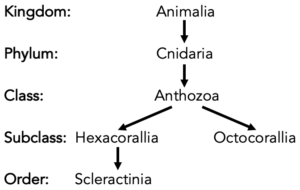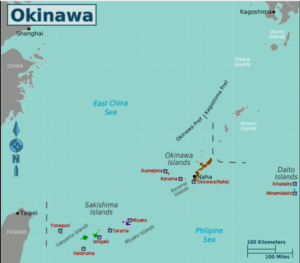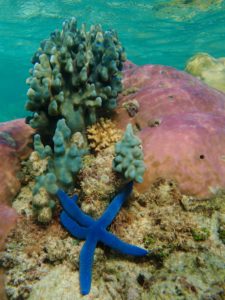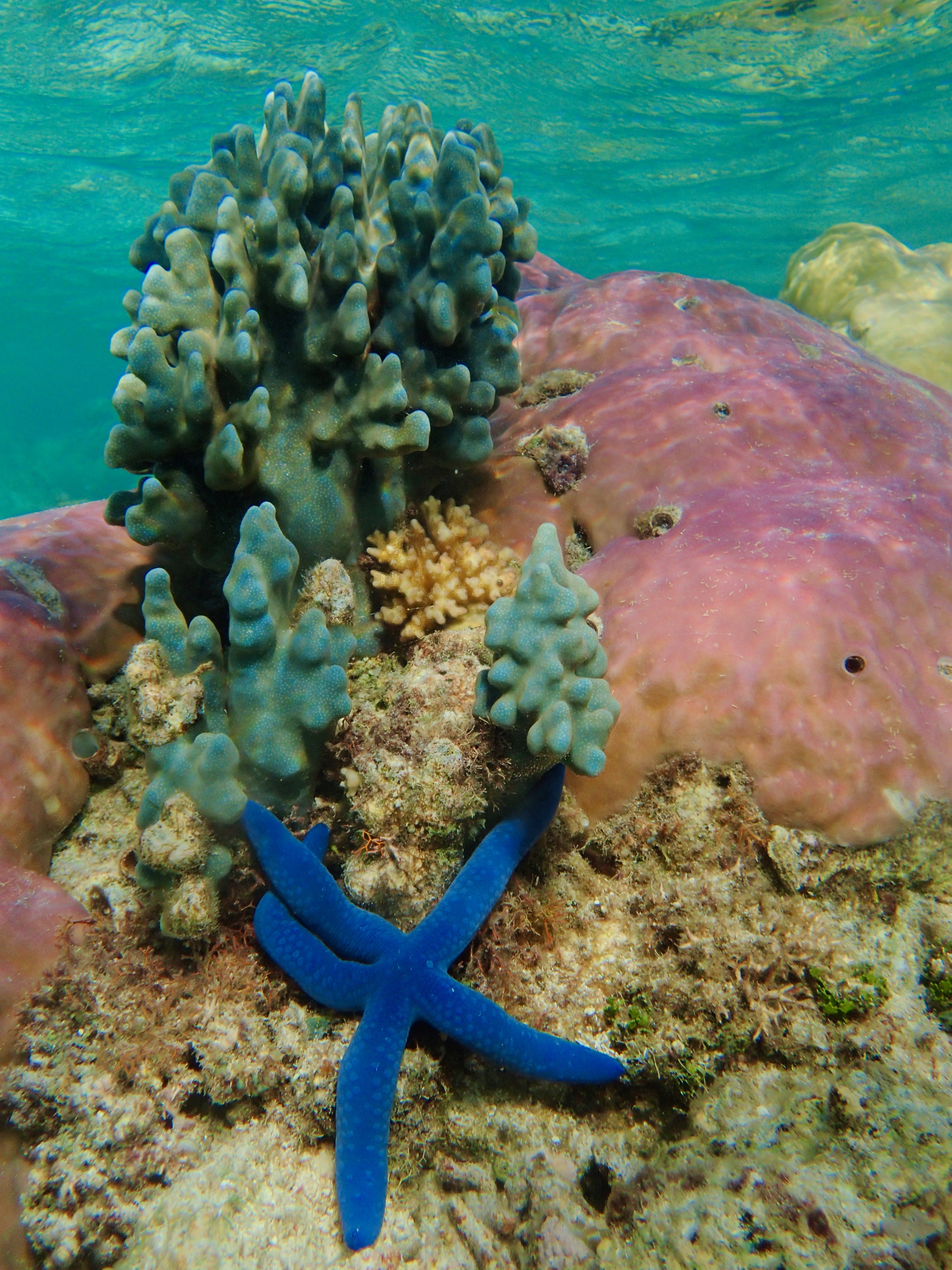Iguchi, A., Yoshioka, Y., Forsman, Z. H., Knapp, I. S. S., Toonen, R. J., Hongo, Y., … Yasuda, N. (2019). RADseq population genomics confirms divergence across closely related species in blue coral (Heliopora coerulea). BMC Evolutionary Biology, 19(1). doi:10.1186/s12862-019-1522-0
If you snorkel over a healthy shallow water coral reef, chances are you will see many colorful species of scleractinian corals. These are stony, reef building corals with 6-fold polyps (hexacorals). But if you are in certain parts of the Indian or Pacific Oceans, you may find a unique coral with a hard skeleton that has more than 6-fold polyps. And to make this coral even more of an outcast, it has a blue rather than the typical white calcium carbonate skeleton. This octocoral (8-fold polyps), Heliopora coerulia, is aptly named “blue coral”.

The problem with its unique blue coloration is that blue coral has become a target for the jewelry and aquarium trades. If life was not difficult enough for a blue coral, it also faces risks due to climate change. Inhabiting shallow tropical water, blue coral along with other marine invertebrates will be subjected to increasing sea temperatures in the near future. Since blue corals can only survive within a narrow thermal threshold, this sea warming could mean extinction for the blue coral. But with Iguchi’s recent study, it looks like the future for Heliopora coerulea may not be so blue after all.
Blue Coral Speciation
After a preliminary study suggested that there may be more than one species of blue coral, Iguchi’s team decided to take a closer look. Before modern technology, scientists often separated one species from another based-on appearance or certain behaviors that we could observe with the naked eye. A killer whale is different from a beluga, for example, because of its coloration and a series of other factors. With corals, it is not typically that simple. With blue coral in Okinawa, Japan (Figure 2), different spawning periods of blue coral clued Iguchi’s team in on possible speciation.

Genetics to the Rescue
As technology improved, however, scientists began to base species delineation on more than looks alone. Using genetics methods, Iguchi’s team has been able to confirm that there are indeed two species of blue coral in Okinawa, Japan. After collecting small fragments of both suspected species of blue coral, the team took a look at the DNA sequences in the lab. With a method called ezRAD-Sequencing, Iguchi’s scientists were able to compare many single nucleotide polymorphisms (SNPs), or small differences in the DNA sequences of various corals. The SNPs allowed the team to distinguish two genetically different species of blue coral.

Can Blue Corals Take the Heat?
Iguchi’s genetic analysis also revealed the functions of other genes within blue corals in Okinawa. Remember how blue corals are threatened due to climate change? It turns out that some of the blue corals have a gene that’s similar to those linked to heat resilience in other corals. Future studies on heat tolerance in blue coral could indicate that blue coral may stand a chance when the sea warms.
Iguchi’s team has found that there are not one, but two species of hard structured octocorals in the modern ocean. It looks like these blue corals may already be responding to the thermal stress of climate change with heat resistance genes. It is now our job to protect this coral and learn more about its stress response mechanisms if we want blue coral to have a not-so-blue future.
Constance is a graduate student at the University of Guam studying coral genetics. She also paints murals integrating art and science at various aquariums and scientific institutions (IG: @coco.paints).

